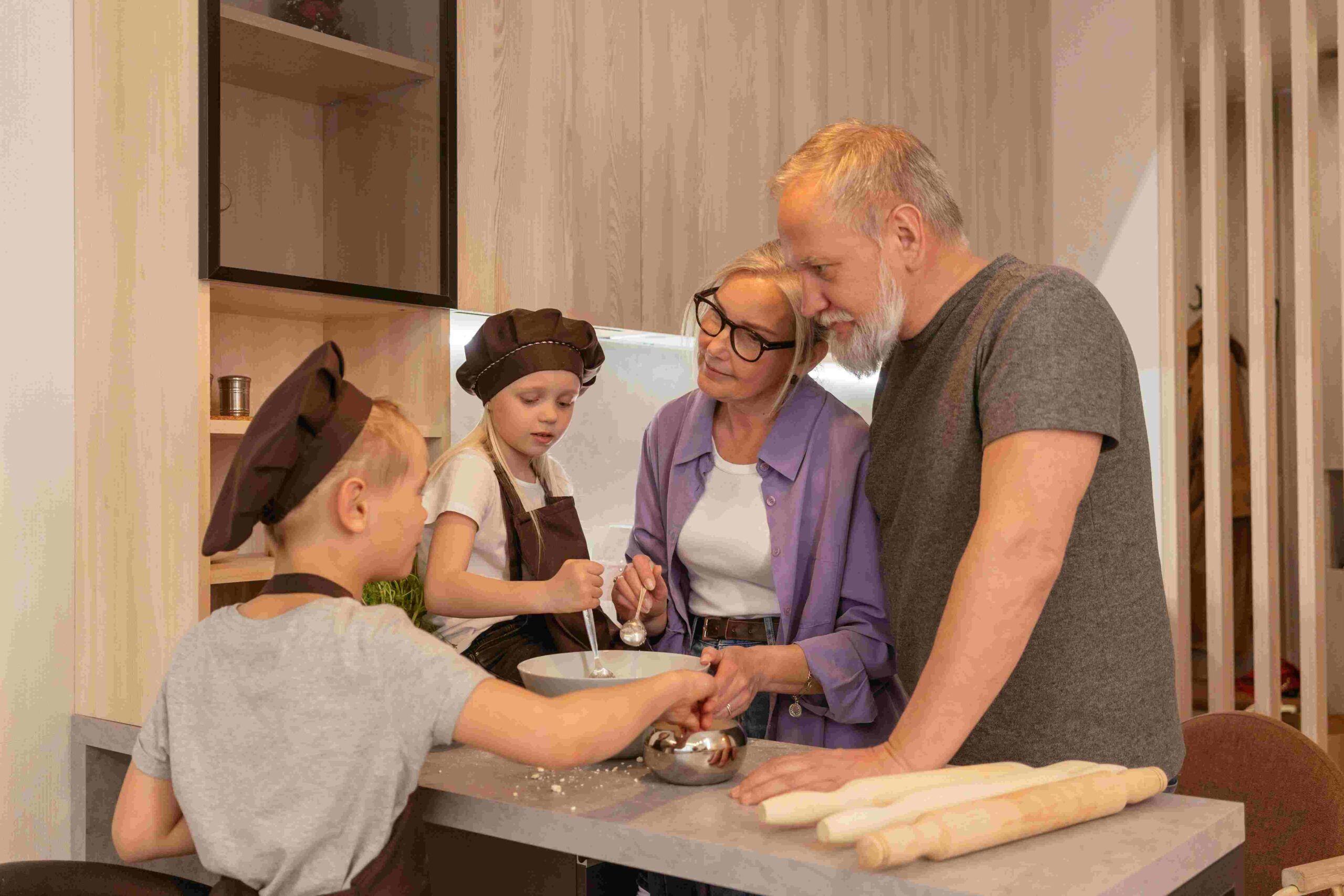
A Family Tradition: Making Cookies Together
Article Level: C2
Explanation: Baking cookies as a family is a heartwarming tradition that fosters connection, creativity, and life lessons. From shared laughter over quirky cookie shapes to passing down recipes, this simple act strengthens bonds and creates cherished memories that last a lifetime.
Commonly Used Words from the Article
-
Cherish /ˈtʃɛrɪʃ/ (verb): To hold something dear.
Families cherish the time spent together during festive seasons. -
Impart /ɪmˈpɑːt/ (verb): To make information known or to pass on knowledge.
Baking sessions impart valuable life skills to children. -
Inclusive /ɪnˈkluːsɪv/ (adjective): Not excluding any section of society or group.
An inclusive activity ensures everyone feels valued. -
Legacy /ˈlɛɡəsi/ (noun): Something handed down by predecessors.
This tradition becomes a legacy for future generations. -
Quirky /ˈkwɜːki/ (adjective): Characterised by peculiar or unexpected traits.
The quirky shapes of the cookies added to their charm.
Audio File of the Article
Read more: A Family Tradition: Making Cookies Together

A Family Tradition: Making Cookies Together
There is an unmistakable charm in the aroma of freshly baked cookies wafting through the house. For many families, baking cookies together is more than a culinary exercise; it is a cherished tradition steeped in love, laughter, and togetherness. In a world increasingly dominated by digital interactions, this hands-on activity offers a rare and rewarding opportunity to reconnect with loved ones.
Every family has its unique way of approaching this delightful ritual. Some follow closely guarded recipes passed down through generations, while others embark on creative adventures with new flavours and decorations. Regardless of the method, the essence of the experience lies in the shared moments, where time seems to slow, and the focus shifts to simple joys.
The preparation phase is often as engaging as the baking itself. Younger members of the family delight in measuring flour and sugar, while older ones take on the intricate task of mixing and shaping. Mistakes are inevitable and even celebrated—spilt milk or oddly shaped cookies become anecdotes retold with a smile during future baking sessions.
This tradition also serves as an excellent opportunity to impart life lessons. Baking is a tangible way to teach children about patience, precision, and teamwork. It fosters creativity as they experiment with cookie cutters and icing designs, and the satisfaction of tasting the final product instils a sense of accomplishment.
Moreover, baking together strengthens familial bonds. Conversations flow naturally in the warm kitchen setting, bridging generational gaps. Grandparents share stories of their childhood baking escapades, parents offer tips, and children revel in their discoveries. These shared experiences become the foundation of lasting memories.
The tradition extends beyond the immediate family. Many households bake cookies to gift friends and neighbours, spreading the joy of the season. In some communities, cookie exchanges are organised, where families swap their homemade delights, creating an opportunity to explore diverse recipes and cultural flavours.
For those seeking to establish this as a family tradition, it requires little beyond enthusiasm and a dash of organisation. Start by selecting a recipe that everyone can contribute to, ensuring that the process is as inclusive as possible. Allocate roles according to age and skill, allowing each member to shine. Finally, embrace the imperfections—the charm of homemade cookies lies as much in their taste as in their quirky shapes and designs.
In an era where time is often stretched thin, setting aside a few hours for this simple tradition can have profound effects. It reconnects families, reinforces values, and creates a legacy of love and laughter. Baking cookies together is more than a pastime; it is an act of nurturing relationships and celebrating life’s sweetest moments.

Grammar Notes
- Complex Sentence Structures: Sentences such as “For many families, baking cookies together is more than a culinary exercise; it is a cherished tradition steeped in love, laughter, and togetherness” demonstrate the use of semicolons and descriptive clauses.
- Use of Present Perfect: “Some have followed closely guarded recipes passed down through generations” illustrates the present perfect tense to connect past actions to the present.
- Emphatic Language: Words like “unmistakable” and “profound” emphasise the emotional depth of the activity.
Grammar Lesson:
Using Semicolons Effectively Semicolons are used to link closely related independent clauses. For example:
- “Mistakes are inevitable; they become anecdotes retold with a smile.” This creates a balance and connection between ideas without the abruptness of a full stop.

Five Questions Based on the Article
-
How does baking cookies together benefit familial relationships?
-
What lessons can children learn from participating in baking sessions?
-
Why is embracing imperfections important in family traditions?
-
How can families involve everyone in the cookie-baking process?
-
What role do community cookie exchanges play in extending this tradition?

We’d love to hear your thoughts! Join the conversation by leaving a comment below. Sharing your insights, questions, or experiences can help you connect with others in our English learning community. It’s a great way to practice your English skills, engage with like-minded individuals, and improve together. Don’t be shy—jump in and let’s keep the discussion going!

 EnglishMasteryHub
EnglishMasteryHub